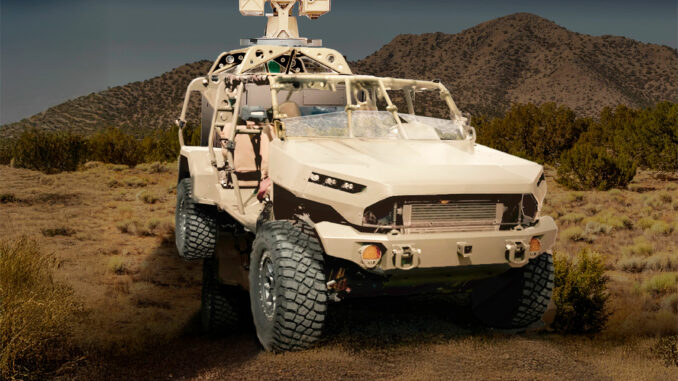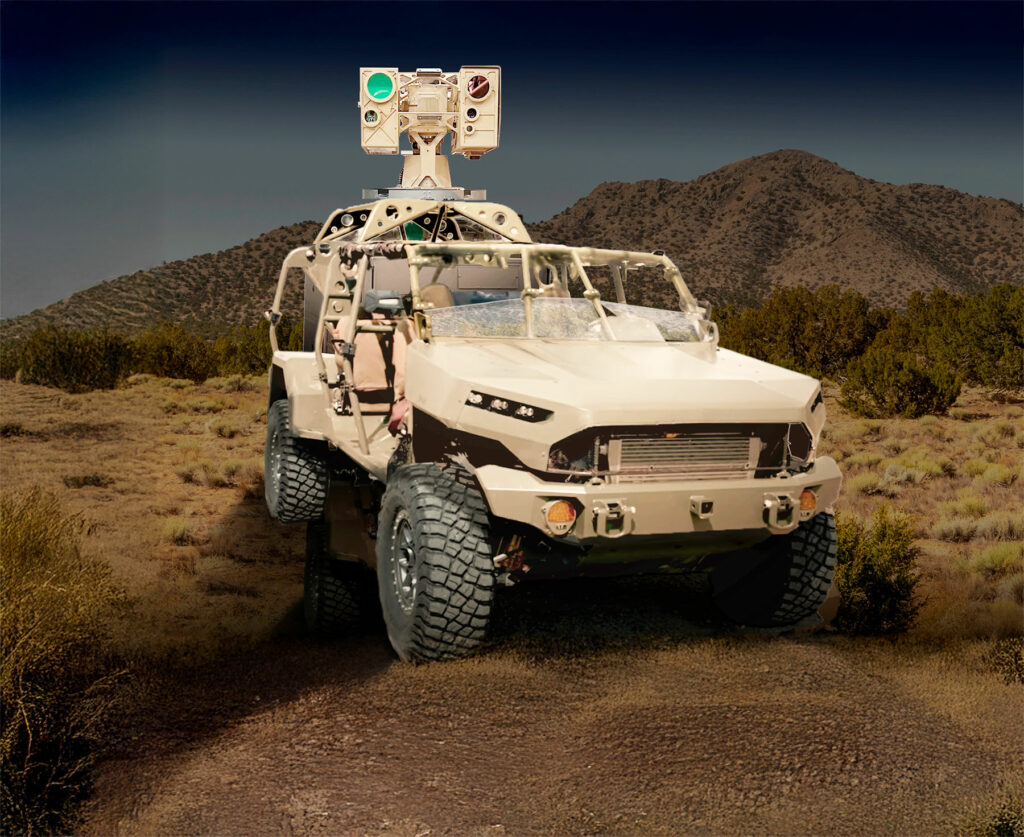
The first successful use of a laser weapon against drones marks a major breakthrough in US defense systems, with global implications.
Laser weapons are finally a reality on the battlefield, after decades of fruitless research. In May 2023, the P-HEL system was successfully used by US forces to shoot down several drones during a confrontation in the Middle East. This success is a major technological advance that could redefine military defense against drones. This type of weapon relies on the ability of lasers to target moving objects with great precision, a technology now mature enough to be deployed in the field. The effectiveness of these systems is based on precision and speed of engagement, offering a solution against the growing threat of drone attacks.
The evolution of laser weapons: a long road to success
Since the 1960s, military men and scientists have dreamed of using laser weapons for defense. However, creating a laser capable of destroying drones, missiles or aircraft proved to be a complex technical challenge. Initial trials in the 1970s produced limited results, such as the destruction of small radio-controlled targets rather than real threats. The laser weapons program has seen several notable failures, including the YAL-1, a billion-dollar project designed to shoot down ballistic missiles, but which was abandoned in 2014 after problems with range and accuracy.
Despite these failures, the technology has evolved, with more than 31 high-energy laser programs in development within the US military. These programs focus on air defense, with systems capable of hitting targets at the speed of light. Unlike Stinger missiles, which cost around 480,000 euros each, lasers offer a major economic advantage, with virtually unlimited ammunition. This ability to neutralize threats at no extra cost per shot is one of the reasons why these weapons are seen as the next logical step in military cybersecurity.
P-HEL: a revolutionary laser system
The P-HEL (Palletized High Energy Laser) system, which recently proved its effectiveness against drones, is equipped with the BlueHalo LOCUST laser. Weighing around 1,542 kg, the LOCUST generates a modest 20 kilowatts of power, but its precision sets it apart from other, more powerful lasers, such as the XN-1 LaWS or the Iron Beam, which produce 50 and 100 kilowatts respectively.
What makes the LOCUST unique is its ability to maintain an extremely precise laser focus, enabling it to strike moving targets such as drones with great efficiency. This system is based on major advances in beam control, a field in which BlueHalo has over 40 years’ expertise. Target tracking capabilities are controlled via integrated radar and an Xbox-style joystick, enabling operators to keep the beam on a precise point on the target, sometimes as small as a coin. This precision enables the P-HEL to perforate materials such as 6 mm steel in a matter of seconds.

The consequences of adopting laser weapons on the battlefield
The success of the P-HEL could transform the face of future warfare, particularly in conflicts where drones play a central role. Increasingly used for air strikes, drones represent a growing threat to military and civilian infrastructure. In January 2023, a drone attack on a military base near the Syrian border killed three American soldiers and wounded 40 others. This type of attack highlights the need for a rapid and effective response to airborne threats.
One of the major advantages of lasers over traditional systems is their ability to engage multiple targets at extremely high speed. Unlike missiles, which require rearming after each shot, lasers can neutralize waves of drones in a matter of seconds, offering a defense in depth against coordinated attacks. What’s more, defense systems like the P-HEL are modular and can be integrated on different types of military platforms, offering 360-degree coverage.
Experts estimate that the US military will deploy these systems at platoon scale (units of around 40 soldiers), with one laser per unit to provide effective protection against drones. However, to ensure total coverage, several lasers will have to work in synergy to ensure overlapping fields of fire, an approach that maximizes the system’s effectiveness.
The growing threat of drones and the importance of lasers
The rise of drones on the battlefield, particularly in the Ukraine conflict, has highlighted the importance of finding fast, accurate solutions to neutralize these threats. Indeed, sources estimate that drones have been responsible for around 80% of Russian casualties since the start of the invasion of Ukraine. Modern drones, especially those of category 3, are capable of carrying heavy explosive charges and striking targets at long range.
Laser weapon systems, such as the P-HEL, are specially designed to meet this type of threat. Unlike missile systems, which require complex and costly logistics, lasers offer instant response. Their ability to operate at the speed of light means that multiple drones can be engaged in a very short space of time, which is crucial in the face of swarm attacks, a technique often employed by Russia and Iran.
Although some suggest that reflective coatings could make drones resistant to lasers, laser experts such as Mark Neice claim that such coatings have a negligible impact on the laser’s ability to burn through the target’s surface. According to tests, these coatings only extend the target’s resistance by about one second, a time insufficient to effectively protect drones against laser attacks.
Future challenges and improvements
Despite these advances, technical challenges remain. For laser defense systems to become a battlefield standard, improvements in range and power are needed. Engineers are currently working on increasing the operational range of lasers, as well as on solutions to make systems more compact and mobile, enabling easier integration on vehicles and ships.
War Wings Daily is an independant magazine.